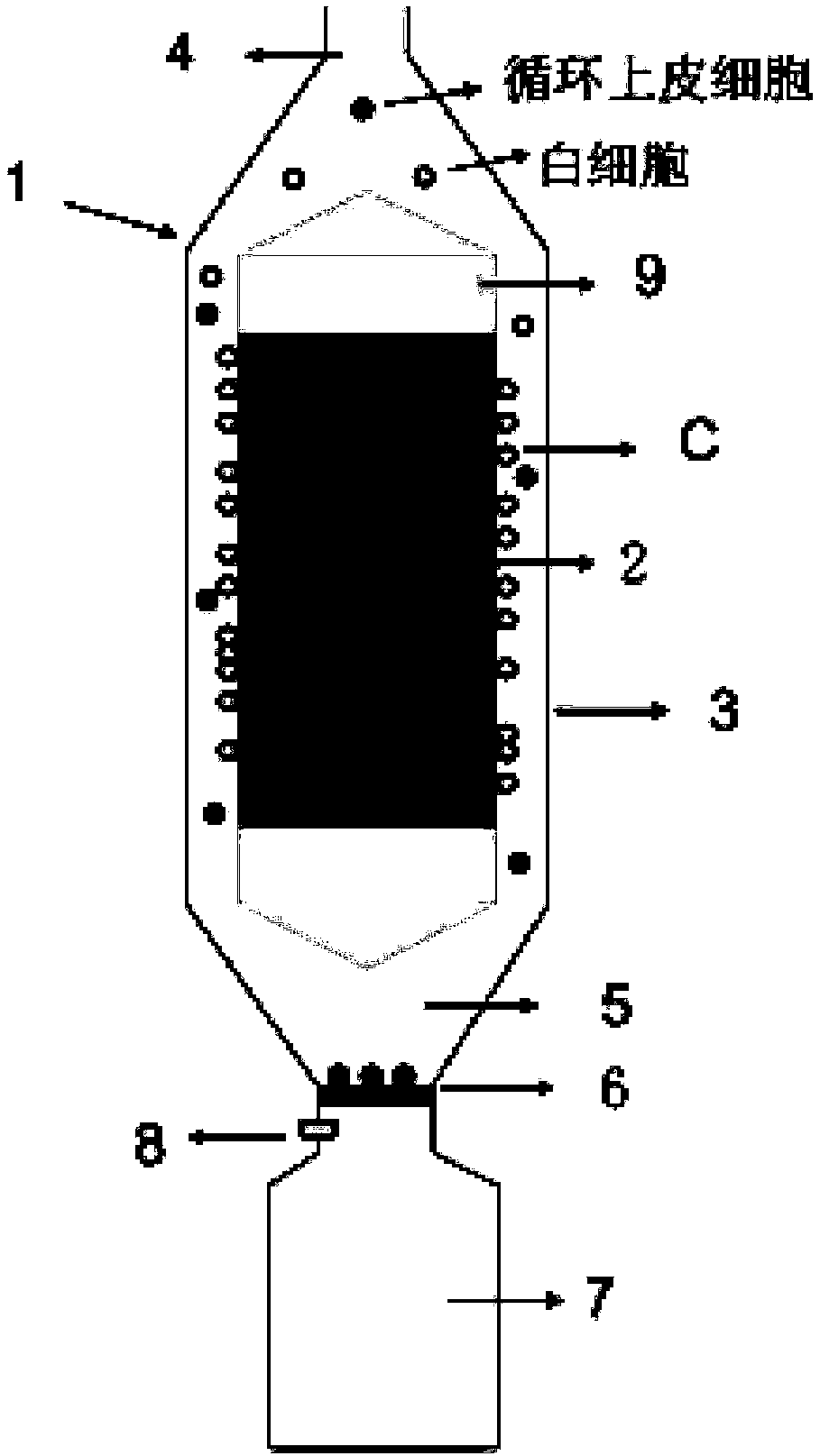Rare cell enrichment device and method
A technology of rare cells and cells, applied in the field of devices for screening and collecting rare cells with high recovery rate, can solve the problem of low recovery rate of negative selection of rare cells
- Summary
- Abstract
- Description
- Claims
- Application Information
AI Technical Summary
Problems solved by technology
Method used
Image
Examples
Embodiment 1
[0035] Enrichment of Circulating Epithelial Cells from Human Peripheral Blood
[0036] (1) Pretreatment of blood samples
[0037] 2 ml of whole blood was subjected to density gradient centrifugation to extract the mononuclear cell layer, and the density gradient centrifugation medium used was Lymphoprep from Stemcell Company TM (#07801), the density gradient centrifuge tube is SepMate from Stemcell TM -15 (#15415), the extracted mononuclear cell layer was diluted with diluent (Hank's balanced salt solution + 0.1% bovine serum albumin + 5mM anticoagulant EDTA), and 100 cells were added according to each white blood cell obtained Ratio of immunomagnetic beads Add CD45 antibody-labeled immunomagnetic beads (about 1 micron in size), mix and incubate for 1 hour.
[0038] (2) Remove the remaining white blood cells in the sample
[0039] Add the diluent to the gradient magnet in the circulating epithelial cell enrichment device, then further dilute the cell suspension incubated ...
Embodiment 2
[0048] Sensitivity and Stability Experiments
[0049] 5, 10, 50, and 100 colon cancer tumor cells HCT116 were stained with the dye Vybrant DiI (Life Tehnologies) and mixed into 1 ml of healthy human blood, and then the tumor cells were captured by the method of Example 1, and each experiment was repeated 3 times . After the capture, the HCT116 cells in the chip were directly counted with a fluorescence microscope to calculate the capture efficiency and experimental deviation. The results show that the capture efficiencies corresponding to the incorporation of 5, 10, 50, and 100 tumor cells and the experimental deviations are 73±12%, 77±12%, 79±6%, and 78±4%, which can reach clinical sample detection required sensitivity and stability.
Embodiment 3
[0051] Single cell recovery and sequencing experiments
[0052] 100 non-small cell lung cancer cells H1975 were stained with the dye Vybrant DiI (Life Tehnologies) and mixed into 1 ml of healthy human blood, and then the tumor cells were captured by the method of Example 1, wherein the microfiltration membrane used to recover the cells was as follows: image 3 The shown microfiltration membrane has a double-layer structure, and its bottom is a silicon nitride film with a thickness of only 1 micron. After the capture, the position of the H1975 cells on the filter membrane was directly counted with a fluorescence microscope, and the mechanically fragile silicon nitride membrane at the bottom of the microwell where the H1975 cells were located was impacted by a fine needle, so that the entire silicon nitride film was broken and the cells fell into the membrane where the cells were located. In the wells of a 384-well plate directly below it for cell recovery, 4 μl of phosphate b...
PUM
| Property | Measurement | Unit |
|---|---|---|
| pore size | aaaaa | aaaaa |
| pore size | aaaaa | aaaaa |
| thickness | aaaaa | aaaaa |
Abstract
Description
Claims
Application Information
 Login to View More
Login to View More - R&D
- Intellectual Property
- Life Sciences
- Materials
- Tech Scout
- Unparalleled Data Quality
- Higher Quality Content
- 60% Fewer Hallucinations
Browse by: Latest US Patents, China's latest patents, Technical Efficacy Thesaurus, Application Domain, Technology Topic, Popular Technical Reports.
© 2025 PatSnap. All rights reserved.Legal|Privacy policy|Modern Slavery Act Transparency Statement|Sitemap|About US| Contact US: help@patsnap.com



